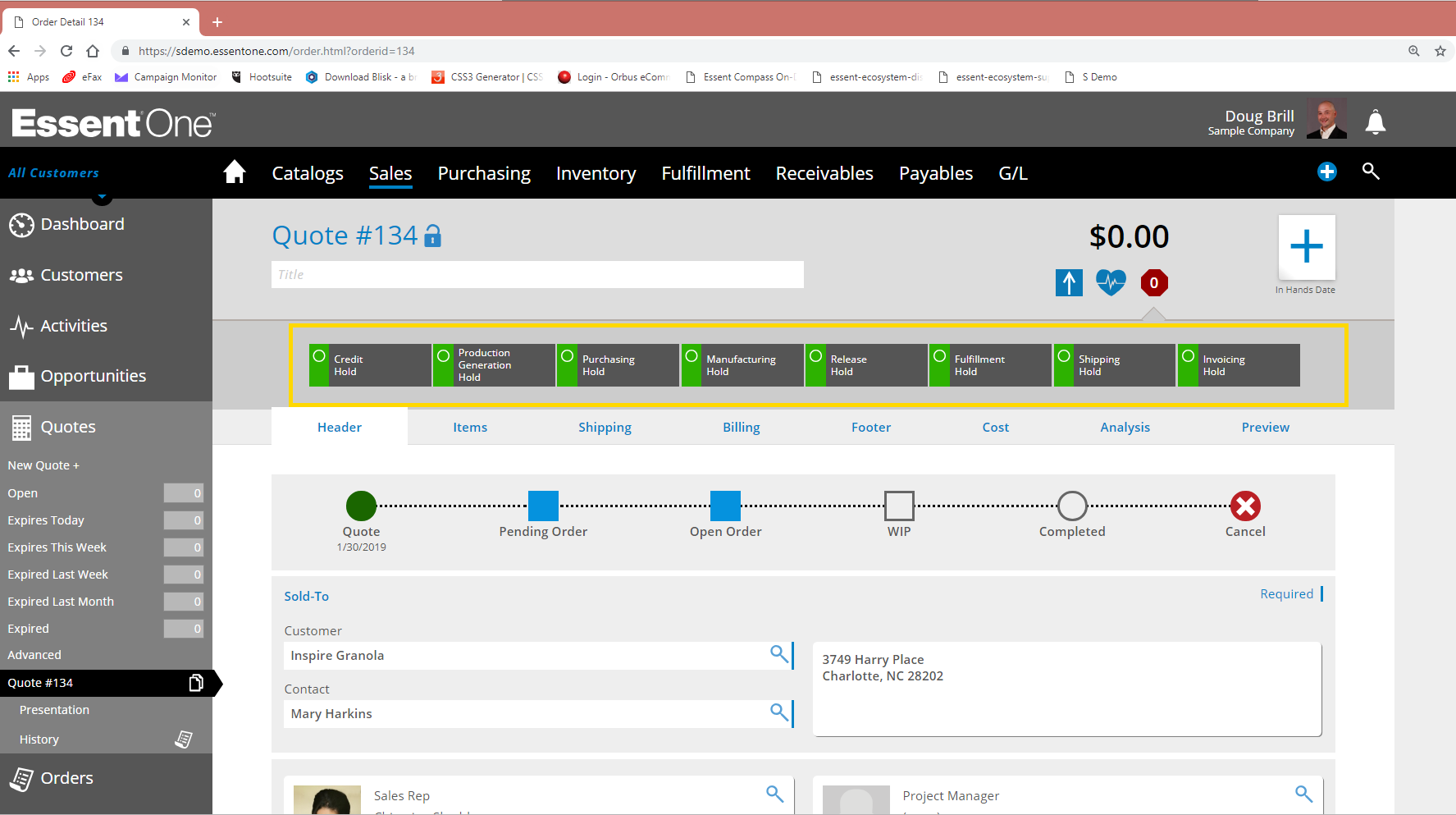
EssentOne provides Configurable Workflow so that companies can build their business rules into the software — and not have software dictate the way the business runs. In this screenshot, highlighted are eight workflow holds that can be placed on Quotes and Orders. For example, a company might want to enforce a Fulfillment Hold pending artwork approval. The Workflow is defined by the user.
ABC Corporation had a rule: Always have a manager approve the pricing before an order moves forward.
Software too often dictates how the business works when it really should be the other way around.
The company got a new software system, however, and that system had some automated pricing. Sales reps started to use the pricing in the system, and they stopped going for approvals. They simply moved orders forward without the pricing approval.
Soon enough, orders moved forward with faulty pricing. Sales Orders and Purchase Orders presumed to be correct were being pulled back, modified, and re-issued. A few orders even made it to the customer before the mistakes were noticed.
What went wrong? ABC Corporation had effective rules for pricing accuracy but implemented a new software system that didn’t account for those rules.
Rather than work in the established, successful way that ABC Corporation had worked, people began to work in the way the software worked. Rules slipped and errors seeped in.
The point is that software too often dictates how the business works when it really should be the other way around.
Configurable Workflow in EssentOne helps ensure business rules are carried out the way the business intended.
Administrators set up the rules they want carried out at certain steps throughout a transaction. For example, Workflow can be configured to put an order on hold until a manager signs off on pricing and artwork.
While EssentOne has its own sequence and steps for processing orders, it also allows the user to define and insert additional steps so that the software is aligned with the way a company does business.
The result is that the software follows the company’s rules, and not the other way around.